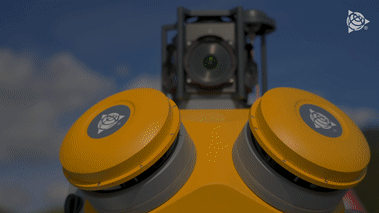Mobile Mapping Delivers Smooth, Sustainable Road Reconstruction in Tuscany
Italy’s Tuscany region is an optimal route to see vineyards, beautiful landscapes…and modern, sustainable roadway restoration techniques? Watch the video and read on to learn more.

The construction firm of Ecovie has built a reputation in the region for introducing more sustainable solutions to roadway construction and maintenance.
Giulio Bacco, general manager of Ecovie, said, “We strongly believe that sustainability should be an important aspect in road construction. Our goal is always a better quality surface built with less pollution and optimized materials.”
With headquarters in Padua, Ecovie specializes in paving, ground stabilization and pavement cold recycling—all with a sustainable focus. Projects range from main roads and motorways to railways and airports.
Recently, the firm was tasked with the substantial restoration and on-site redevelopment work that includes a cold regeneration intervention of a 5 km stretch of roadway on E45 near the Sansepolcro Province of Tuscany. A cold regeneration intervention is a multi-step process that begins with ripping the asphalt concrete road out, then grinding the material and mixing with a binder, and then placing it back on the roadway. It’s a recycling train method that delivers a better foundation without any haulage or replacement materials.
Diego Raboni, technical manager handling topography and new technology at Ecovie, said, “For this work, both the surface pavement and the underlying pavement are completely demolished. To ensure smooth restoration, we have to map the demolished road’s conditions and map that model to design intent.”
The Ecovie team opted to test out a new technology, the Trimble® MX50, a mobile mapping system that combines precise LiDAR data and immersive panoramic imagery, to help gather the road surface data
“This mobile-mapping technology lets us survey millions upon millions of points in the shortest time possible and with perfect precision,” explained Raboni. “Then we can use the point cloud to create a 3D map of the roadway. It also lets us take a snapshot on any point anywhere on the site. Reviewing the point cloud gives the entire team a feeling of being on-site even if we’re working from the office.”
To begin the work, Raboni and his team implemented a line of cornerstones, initially using GNSS in static mode, then they leveled out the cornerstones and added more targets with the digital level. Driving a vehicle with the MX50 mounted on the back, they were able to create a cloud out of points that were tied to the targets.
Once the data was collected, the team used Trimble Business Center software to construct the as-built conditions model of the road and tackle the gradient and the transversal longitudinal slopes characteristics.
Raboni continued, “Then we created a 3D mathematical model and loaded it into our site machines, which included dozers, graders and rollers. Dozers equipped with GNSS technology refill the road with the ground up materials in preparation for treatment. Road rollers monitor the compaction of the material and the different areas where there might be deteriorations.”
In terms of accuracy, the grader operators are able to deliver a well-compacted, stable and smooth pavement to centimeter or better accuracy.
Bacco concluded, “Thanks to the mobile mapping technology we’re able to work more efficiently, and above all, deliver high quality. We’ve got various sites all around Italy that are very complex and where timing is really tight, so the wrong workflow could seriously compromise the site’s performance. The MX50 helps assure a quality end product in the most sustainable way.”
Learn more: geospatial.trimble.com/MX50